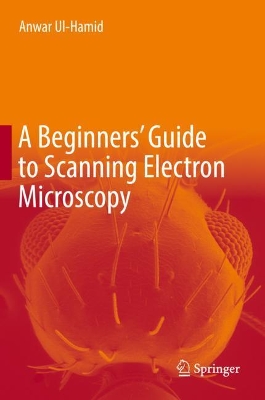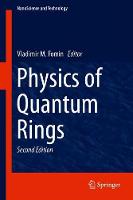Beginners' Guide to Scanning Electron Microscopy
 -15%
portes grátis
-15%
portes grátis
Beginners' Guide to Scanning Electron Microscopy
Ul-Hamid, Anwar
Springer International Publishing AG
11/2018
402
Dura
Inglês
9783319984810
15 a 20 dias
799
Descrição não disponível.
Introduction.- What is the SEM.- Image Resolution in the SEM.- Image Formation in the SEM.- Information obtained using the SEM.- Brief History of the SEM Development.- Components of the SEM.- Primary Components.- Electron Column.- Electron Gun.- Thermionic Emission Electron Guns.- Tungsten Filament Guns.- Lanthalum Hexaboride (LaB6) Emitter Guns.- Field Emission Electron Guns.- Electromagnetic Lenses.- Condenser Lenses.- Objective Lenses.- Pinhole Lens.- Immersion Lens.- Snorkel Lens.- Lens Aberrations.- Spherical Aberration.- Chromatic Aberration.- Astigmatism.- Scan Coils.- Objective Aperture.- Specimen Chamber.- Specimen Stage.- CCD Camera.- Detectors.- Secondary Electron Detector (SED).- Backscattered Electron Detector (BSED).- Energy Dispersive X-ray Spectrometer (EDS Detector).- Low Vacuum Detector.- Low Voltage High Contrast Detector.- Through-the-lens Detector.- Electron Backscattered Diffraction (EBSD) Detector.- Scanning Transmission Electron Microscopy (STEM) Detector.- Computer Control System.- Secondary Components.- Vacuum System.- Chiller.- Heater.- Electronics.- Anti-Vibration Platform.- Specialized Equipment.- Focused Ion Beam (FIB) Instrument.- Combined Focused Ion Beam-Scanning Electron Microscope.- Beam-Specimen Interaction.- Atom Model.- Elastic Scattering.- Inelastic Scattering.- Effect of Electron Scattering.- Interaction Volume.- Electron Range.- Signals Obtained From the Specimen.- Backscattered Electrons.- Secondary Electrons.- Characteristic X-Ray Lines.- White Radiation.- X-Ray Fluorescence.- Cathodoluminescence Radiation.- Imaging with the SEM.- Image Formation in the SEM.- Magnification.- Resolution.- Depth of Field.- Contrast.- Secondary Electron Imaging.- Backscattered Electron Imaging.- Influence of Various Factors on SEM Imaging.- Effect of Accelerating Voltage.- Effect of Probe Current.- Effect of Working Distance.- Effect of Objective Aperture.- Effect of Tilt.- Astigmatism.- Image Distortion.- Incorrect Alignment.- Beam Damage.- Charging.- Edge Effect.- Sample direction with respect to the Detector Position.- Factors affecting Image Quality: Indications-Causes-Remedies.- Summary of Specialized Imaging Techniques.- Imaging at Low Vacuum.- Imaging at Low Voltage.- Environmental SEM.- Imaging at Low/Elevated Temperature.- Imaging Samples under Stress.- Use of Tilt and Rotation during Imaging.- Use of STEM detector in SEM.- Use of EBSD in SEM.- SEM Operation.- Specimen Insertion.- Image Acquisition.- Microscope Alignment.- Image Quality.- High Resolution Imaging.- Maintenance of the SEM.- Microchemical Analysis with the SEM.- Working of the EDS Detector.- Characteristics of the EDS Detector.- Qualitative EDS Analysis.- Quantitative EDS Analysis.- Atomic Number (Z) Effect.- X-ray Absorption (A) Effect.- X-ray Fluorescence (F) Effect.- ZAF Corrections.- Standardless Analysis.- Trace Element Analysis.- Sample Preparation.- Metals, Alloys, Ceramics and Semiconductors.- Polymers.- Geological Samples.- Biological Samples.- Semiconductors.- Use of Focused Ion Beam.
Este título pertence ao(s) assunto(s) indicados(s). Para ver outros títulos clique no assunto desejado.
Scanning electron microscopy;sample preparation for SEM;SEM instrumentation;Specialized imaging techniques;components of the SEM;theory of specimen-beam interaction
Introduction.- What is the SEM.- Image Resolution in the SEM.- Image Formation in the SEM.- Information obtained using the SEM.- Brief History of the SEM Development.- Components of the SEM.- Primary Components.- Electron Column.- Electron Gun.- Thermionic Emission Electron Guns.- Tungsten Filament Guns.- Lanthalum Hexaboride (LaB6) Emitter Guns.- Field Emission Electron Guns.- Electromagnetic Lenses.- Condenser Lenses.- Objective Lenses.- Pinhole Lens.- Immersion Lens.- Snorkel Lens.- Lens Aberrations.- Spherical Aberration.- Chromatic Aberration.- Astigmatism.- Scan Coils.- Objective Aperture.- Specimen Chamber.- Specimen Stage.- CCD Camera.- Detectors.- Secondary Electron Detector (SED).- Backscattered Electron Detector (BSED).- Energy Dispersive X-ray Spectrometer (EDS Detector).- Low Vacuum Detector.- Low Voltage High Contrast Detector.- Through-the-lens Detector.- Electron Backscattered Diffraction (EBSD) Detector.- Scanning Transmission Electron Microscopy (STEM) Detector.- Computer Control System.- Secondary Components.- Vacuum System.- Chiller.- Heater.- Electronics.- Anti-Vibration Platform.- Specialized Equipment.- Focused Ion Beam (FIB) Instrument.- Combined Focused Ion Beam-Scanning Electron Microscope.- Beam-Specimen Interaction.- Atom Model.- Elastic Scattering.- Inelastic Scattering.- Effect of Electron Scattering.- Interaction Volume.- Electron Range.- Signals Obtained From the Specimen.- Backscattered Electrons.- Secondary Electrons.- Characteristic X-Ray Lines.- White Radiation.- X-Ray Fluorescence.- Cathodoluminescence Radiation.- Imaging with the SEM.- Image Formation in the SEM.- Magnification.- Resolution.- Depth of Field.- Contrast.- Secondary Electron Imaging.- Backscattered Electron Imaging.- Influence of Various Factors on SEM Imaging.- Effect of Accelerating Voltage.- Effect of Probe Current.- Effect of Working Distance.- Effect of Objective Aperture.- Effect of Tilt.- Astigmatism.- Image Distortion.- Incorrect Alignment.- Beam Damage.- Charging.- Edge Effect.- Sample direction with respect to the Detector Position.- Factors affecting Image Quality: Indications-Causes-Remedies.- Summary of Specialized Imaging Techniques.- Imaging at Low Vacuum.- Imaging at Low Voltage.- Environmental SEM.- Imaging at Low/Elevated Temperature.- Imaging Samples under Stress.- Use of Tilt and Rotation during Imaging.- Use of STEM detector in SEM.- Use of EBSD in SEM.- SEM Operation.- Specimen Insertion.- Image Acquisition.- Microscope Alignment.- Image Quality.- High Resolution Imaging.- Maintenance of the SEM.- Microchemical Analysis with the SEM.- Working of the EDS Detector.- Characteristics of the EDS Detector.- Qualitative EDS Analysis.- Quantitative EDS Analysis.- Atomic Number (Z) Effect.- X-ray Absorption (A) Effect.- X-ray Fluorescence (F) Effect.- ZAF Corrections.- Standardless Analysis.- Trace Element Analysis.- Sample Preparation.- Metals, Alloys, Ceramics and Semiconductors.- Polymers.- Geological Samples.- Biological Samples.- Semiconductors.- Use of Focused Ion Beam.
Este título pertence ao(s) assunto(s) indicados(s). Para ver outros títulos clique no assunto desejado.







